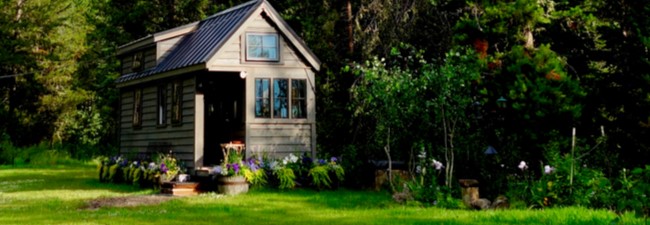New Page
Friday, January 22, 2021 - A Retirement Home Is a Tiny House in the Kids' Backyard

A tiny home in retirement could be a more-affordable way to downsize and still be close to family. This article is from the US - but stay tuned as tiny homes are catching on in Canada too!
When Cary Childre, 65, of Athens, Ga., considered moving closer to her daughter, Eva Maudlin, of Decatur, an Atlanta suburb, she realized she couldn’t afford to buy “much of anything.” So, Eva, 31, researched building a cottage in her own backyard. The 429-square-foot home will have one bedroom and bathroom, a galley kitchen and living area, and a small, covered porch.
Fueled by an aging population and a scarcity of affordable housing, accessory dwelling units (ADU) are a hot new trend in multigenerational living. You may know them better as in-law suites, garage apartments, carriage houses, casitas and granny flats. In the US the share of for-sale listings with an ADU rose 8.6% year-over-year since 2009.
These homes can be created by finishing a basement or attic, converting a garage, reconfiguring unused space, adding on, custom-building a detached unit or installing a prefab one. Over time, you could rent the ADU for income; house a parent, child or caregiver; downsize into it yourself and rent the main house; or make it an office or guest quarters.
How much you’ll spend varies by city, type and degree of customization, says Kol Peterson, an ADU advocate and consultant in Portland, Ore. He says he’s seen the cost range from $20,000 for a basement unit to more than $400,000 for one built above a garage.
He offers a few rules of thumb wherever you live: The higher the cost of housing, the higher the cost of construction. Converting existing space is cheaper than building a detached unit. Because of the fixed costs to build a detached home of any size, a larger unit will be only marginally more expensive than a smaller one; he recommends building up to the largest allowable size.
A prefab ADU is cheaper and quicker to install than one built on site, but a custom design lets you include aging-in-place features, such as a step-free entry, wider doorways and a curbless shower. If you hire a design-builder, look for an aging-in-place specialist certified by the National Association of Home Builders.
An ADU should also allow elders privacy, so they will feel at home, not like a visitor or intruder, says Michael K. Lenahen, an architect and president of Aurora Builders, in Jacksonville, Fla. Consider creating a private entrance and adding soundproofing to the shared walls of an in-law suite. Sitting areas indoors and outdoors will allow you or a parent to enjoy solitude, entertain friends without asking for permission and avoid feeling confined.
Most homeowners pay for their ADUs with cash, home equity borrowing or a cash-out refinance. Other options include a construction loan or renovation mortgage.
When Childre’s cottage is ready, she expects to sell her home for about $300,000, pay $190,000 for the cottage and stash the rest for future needs. Mother and daughter look forward to living footsteps away.
Source - SRES January 2021